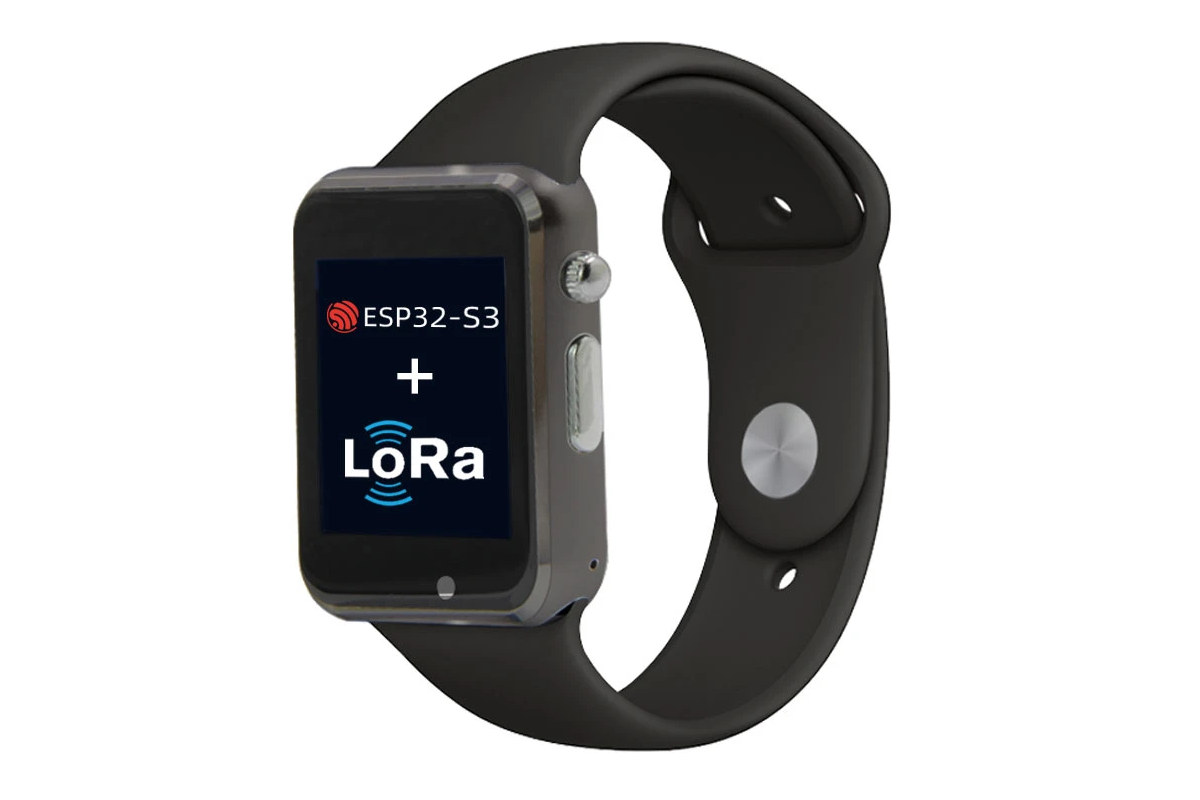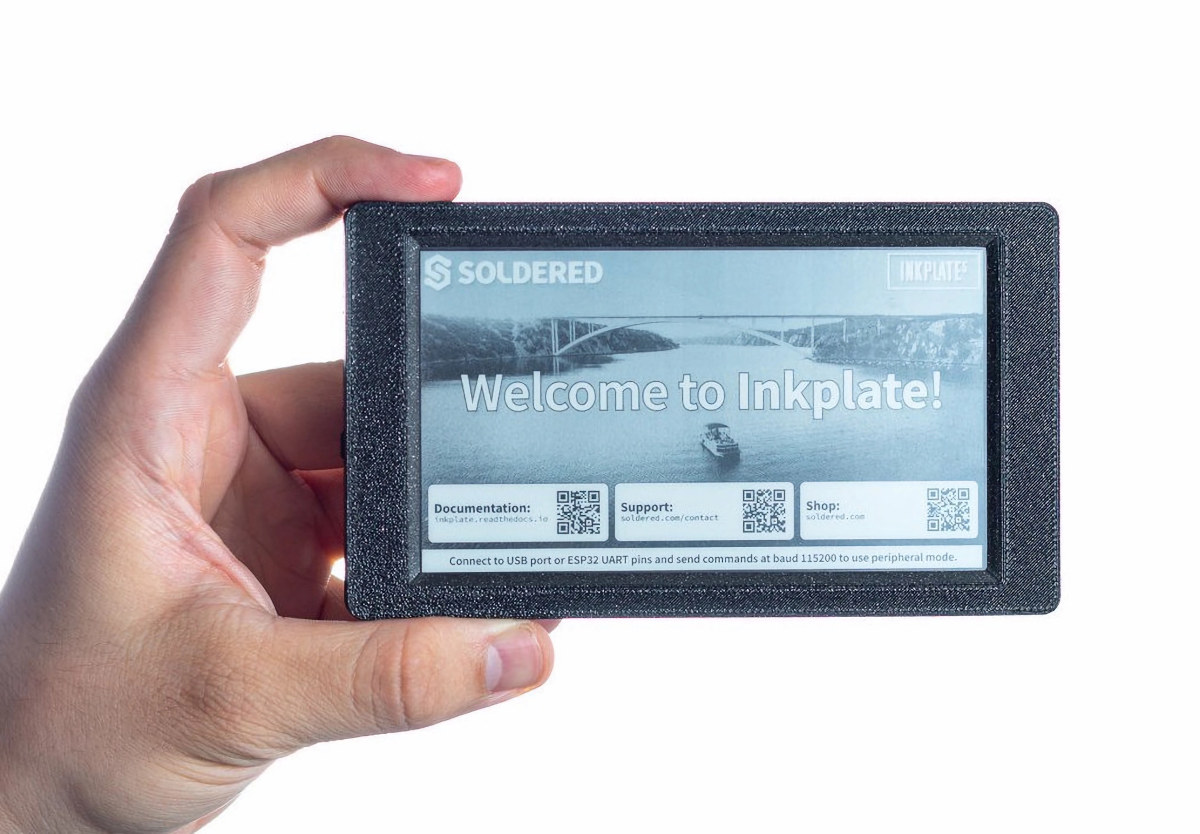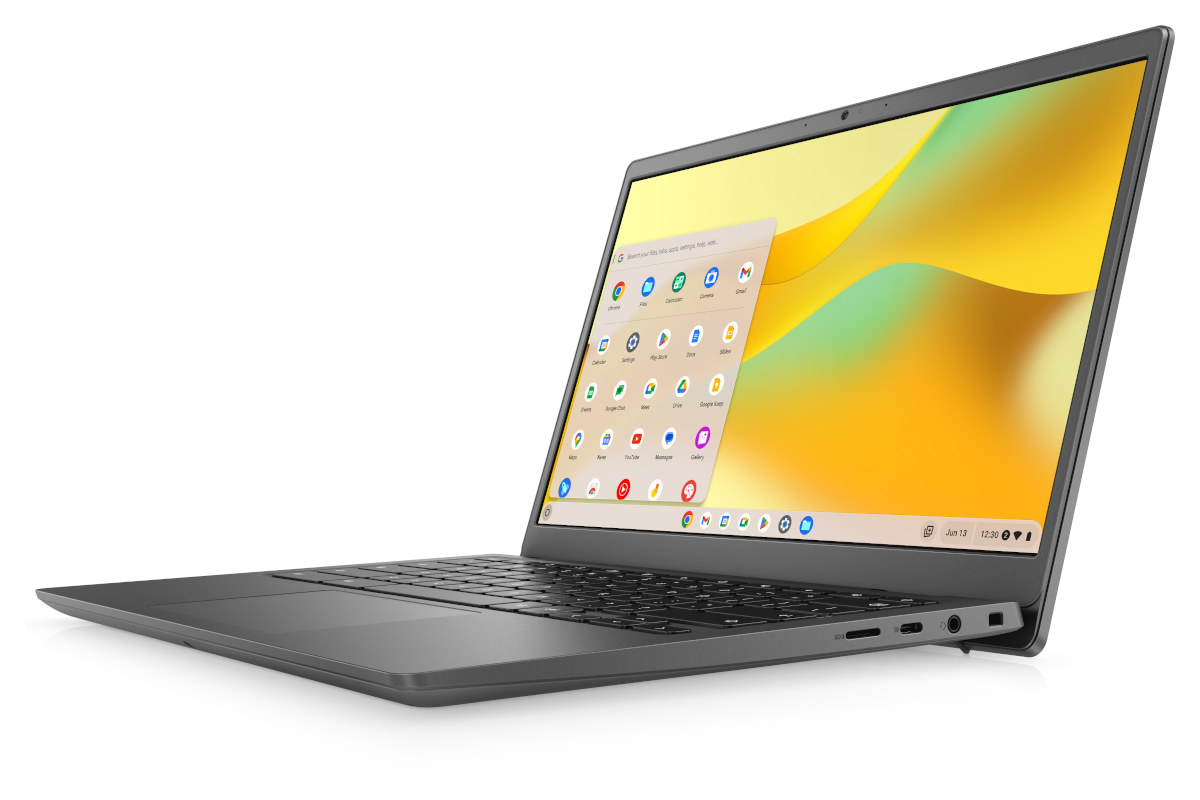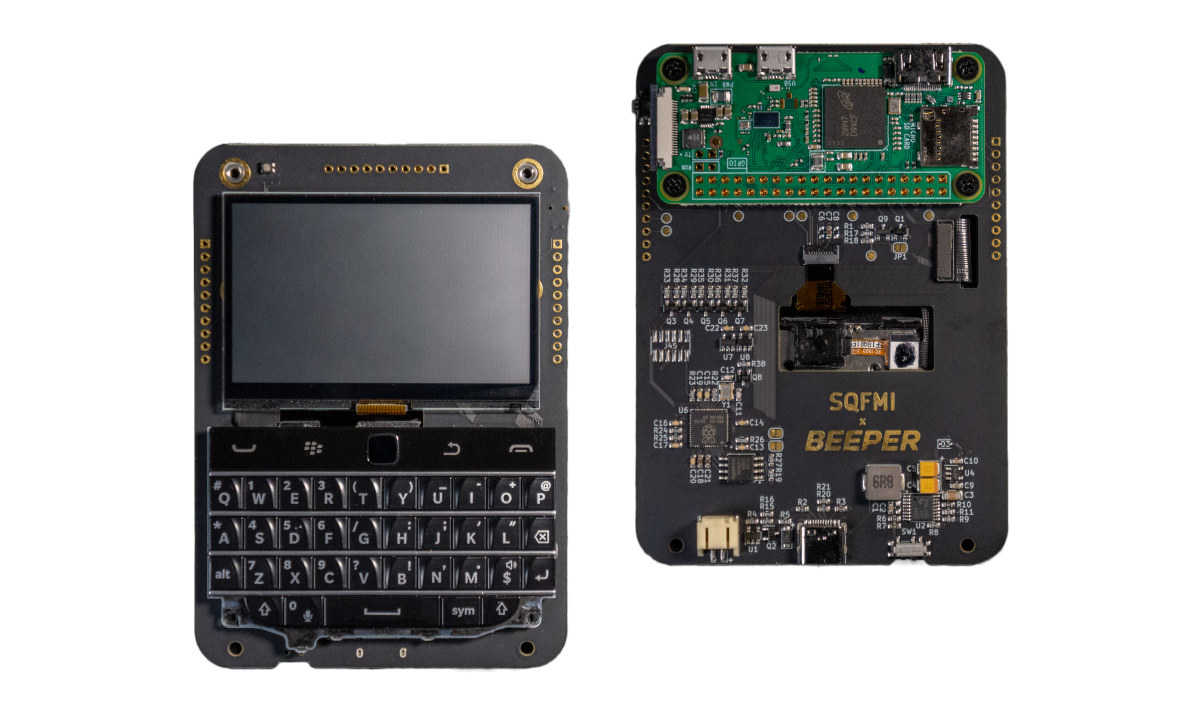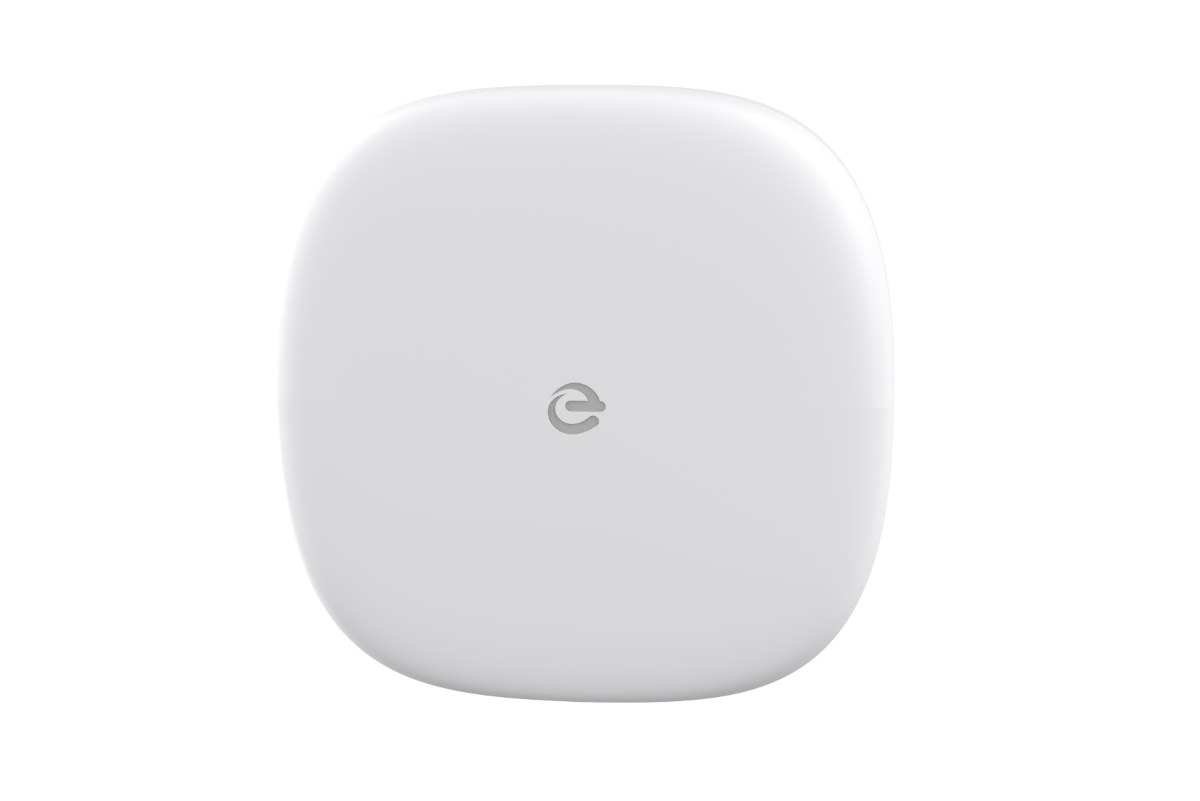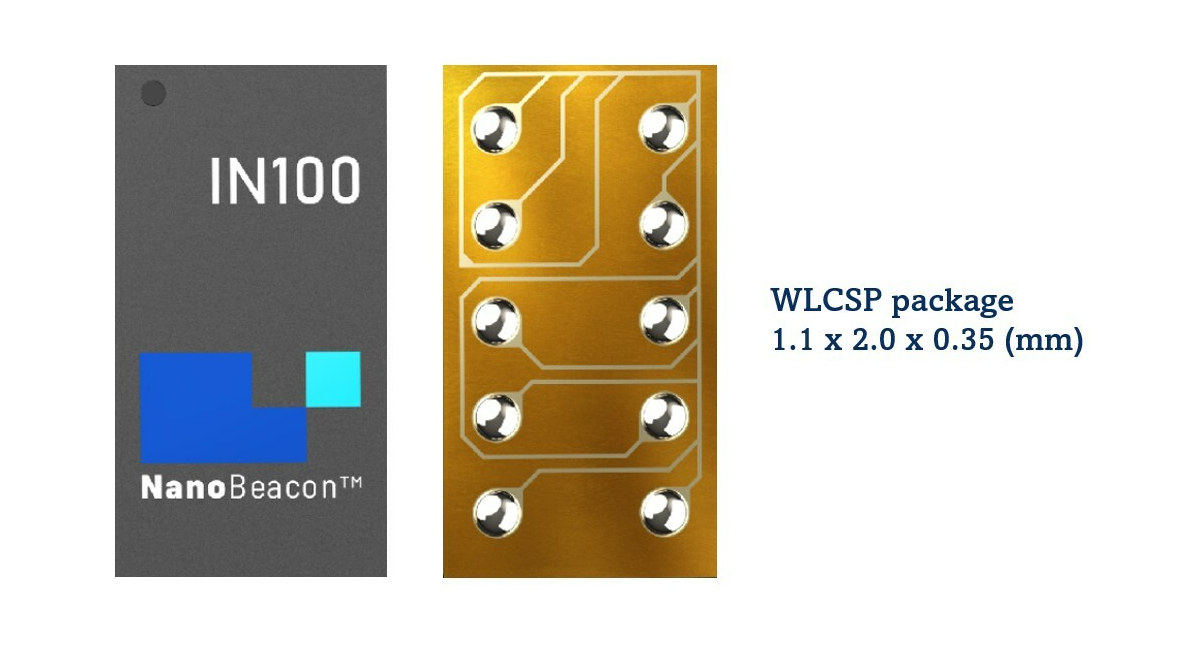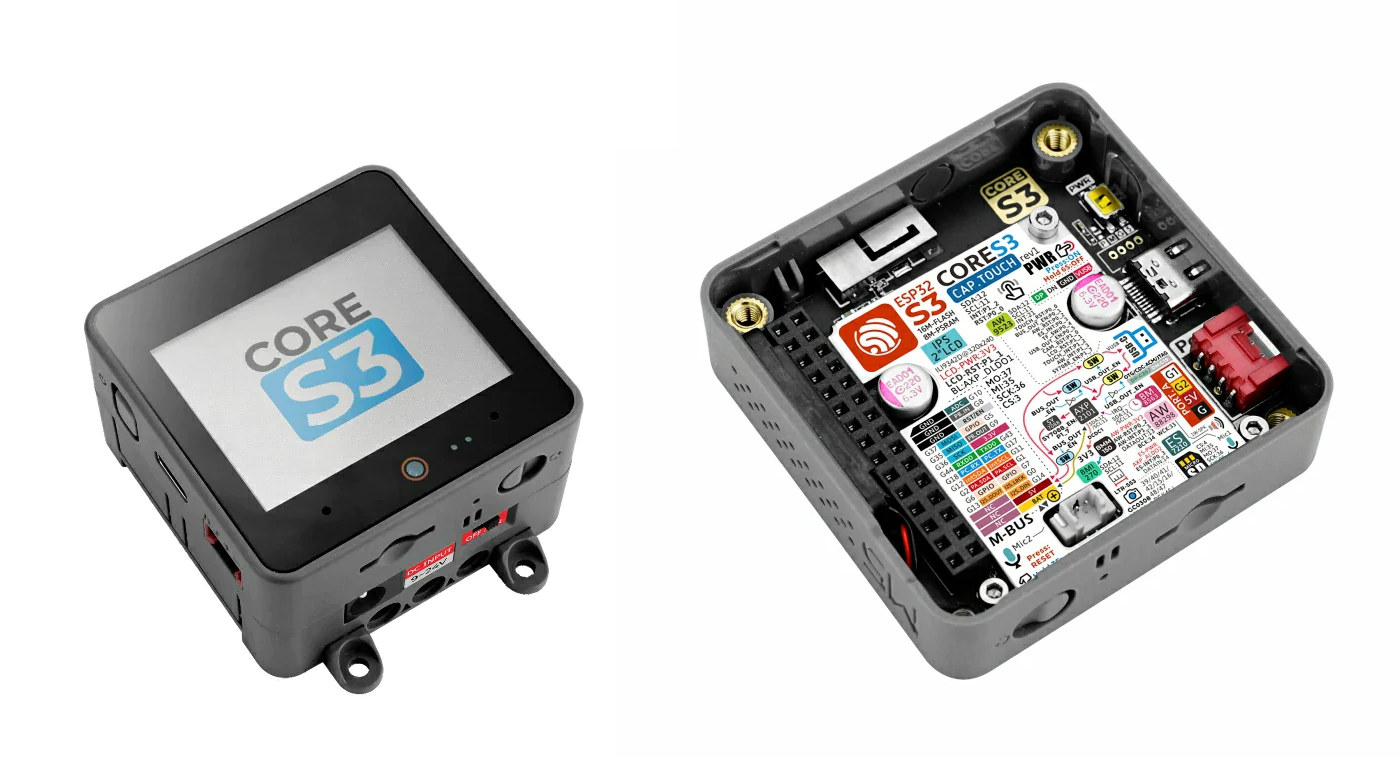LILYGO T-Watch S3 is an ESP32-S3 WiFi and Bluetooth LE smartwatch with LoRa connectivity, and other interesting features such as an RTC, audio support, a vibration motor, and an infrared transmitter to control home appliances. The watch integrates a 1.54-inch color LCD display with capacitive touch, a button to turn on and off the device, and a USB port to charge the included 400 mAh battery. The T-Watch S3 sells in silver or “gun color” with a black wrist strap. T-Watch S3 specifications: Wireless MCU – Espressif Systems ESP32-S3 dual-core Tensilica LX7 @ up to 240 MHz with vector instructions for AI acceleration, 512KB RAM, 8MB PSRAM, 16MB flash, WiFi 4 and Bluetooth LE wireless connectivity Connectivity 2.4 GHz WiFi 4 (802.11 b/g/n) Bluetooth LE 5.0 Semtech SX1262 LoRa RF transceiver: 433 MHz, 868 MHz, 915 MHz Display – 1.54-inch 16-bit color LCD display with 240×240 resolution, capacitive touch; ST7789V […]
Inkplate 5 – A 5.2-inch wireless e-paper display programmable with Arduino or MicroPython (Crowdfunding)
The team at Soldered Electronics has been designing Inkplate ESP32-based e-paper displays ever since the first 6-inch model was launched in 2019. The latest Inkplate 5 comes with a recycled 5.2-inch E-Ink (e-paper) display with refresh times of only 0.19 seconds, and programmable with the Arduino IDE or MicroPython firmware. The WiFi-connected display offers a 960×540 resolution, or 213 DPI pixel density, integrates an RTC with battery for accurate timekeeping, two buttons for power and wake/user, and I/O expansion via headers and an easyC/Qwicc connector. Inkplate 5 specifications: Wireless module – Dual-core ESP32 processor with Wi-Fi 4 & Bluetooth 4.0 (BLE) connectivity, 8MB flash, 4MB PSRAM External storage – MicroSD card socket Display – 5.2-inch, 960×540 e-paper display with 213 DPI pixel density Refresh times: full refresh in just 1.02s (1-bit and 3-bit) and partial refresh in 0.19s (1-bit) USB – 1x USB Type-C port for programming and power Expansion […]
Silicon Labs FG28 Sub-GHz wireless and 2.4 GHz BLE SoC supports Amazon Sidewalk, Wi-SUN, etc…
Silicon Labs dual-band FG28 Cortex-M33 SoC comes with sub-Gigahertz and 2.4 GHz Bluetooth LE radios that support long-range networks and protocols like Amazon Sidewalk, Wi-SUN, and other proprietary protocols, as well as a built-in AI/ML accelerator for machine learning inference and SiLabs Secure Vault technology. The chip looks to be an update to the sub-GHz FG25 Cortex-M33 microcontroller with an additional 2.4 GHz BLE radio, but somehow less program memory (up to 256KB) and storage (up to 1024 KB). The peripherals implemented in the chip are almost the same, as the microcontroller gains support for predictive maintenance with a small matrix vector processor for AI/ML acceleration. Silicon Labs FG28 (EFR32FG28) specifications: MCU core – Arm Cortex-M33 @ 78 MHz with DSP instructions and FPU On-chip memory – Up to 256 kB RAM data memory On-chip storage – Up to 1024 kB flash program memory AI accelerator – Matrix Vector Processor […]
AMD Ryzen and Athlon 7020-C processors to power Chromebooks with up to 19.5 hours of battery life
AMD has just unveiled the Ryzen and Athlon 7020-C series processor family designed for Chromebooks, with up to four “Zen 2” cores clocked at up to 4.3 GHz, AMD RDNA 2 graphics, and promises of high power efficiency with Chromebook based on the entry-level Athlon Silver 7120C processor lasting up to an estimated 19.5 hours on a charge. AMD says the Ryzen 3 7320C processor in the Dell Latitude Chromebook 3445 delivers 1.6 times higher average performance than a Chromebook based on the previous generation Ryzen 3 3250C processor and provides a 15% performance advantage with up to 3.5 hours longer battery life compared to the HP Chromebook MT7921 powered by an Intel Core i3-N305 “Alder Lake-N” processor. Four models are available at launch: Ryzen 5 7520C, Ryzen 3 7320C, Athlon Gold 7220C, and Athlon Silver 7120C. All are 15W TDP parts, manufactured with a 6nm process, and come with […]
BeepBerry handheld Linux computer drives 2.7-inch display with Raspberry Pi Zero W
Good news! The PocketCHIP handheld Linux computer is back! OK, not quite but that’s what the Raspberry Pi Zero-powered BeepBerry reminds me of with a Blackberry-like keyboard, a small 2.7-inch display, and a 2,000mAh LiPo battery for power. The BeepBerry is another open-source hardware design from SQFMI, who previously did the Watchy ESP32 E-Ink smartwatch, that runs Raspberry Pi OS Lite on the Raspberry Pi Zero/Zero W, and also includes a Raspberry Pi RP2040 to handle the keyboard and peripherals. BeepBerry specifications: SBC – Raspberry Pi Zero board with a Broadcom BCM2835 ARM11 processor @ 700 MHz, VideoCore IV GPU, or Raspberry Pi Zero W with WiFi and Bluetooth Storage – MicroSD card slot Display – Ultra-low power high contrast 2.7-inch Sharp Memory LCD with 400 x 200 resolution User input – QWERTY tactile keyboard w/ backlight and touchpad based on Solder Party BB Q20 Keyboard USB – USB-C programming […]
Energous 2W PowerBridge transmitter doubles wireless power for IoT devices
Energous has launched the 2W PowerBridge transmitter that doubles the energizing capability of Energous’ 1W transmitter found in WattUp 1W active energy harvesting developer kit, the “Wirelessly powered sensor evaluation kit“, and various deployments in the field. Energous wireless transmitters are used in IoT applications across the supply chain, logistics, retail, industrial and agricultural industries, which benefit from lower maintenance and wiring costs, and the new 2W transmitter will provide better RF coverage and power levels. Energous further explains its 2W PowerBridge helps reduce the need for replaceable batteries and charging cables since it can power IoT devices at a distance in industrial, commercial, and residential settings leading to a reduced need for maintenance or human intervention, enabling a more automated workflow, and the deployment of “Active Energy Wireless Power Networks”. So while there will also be wasted energy with at-a-distance wireless power, it could still make financial sense for […]
The world’s smallest Bluetooth SoC: InPlay NanoBeacon SoC IN100 in 2.0×1.1mm WLCSP package
InPlay has just announced a Wafer Level Chip Scale Package (WLCSP) for its NanoBeacon SoC IN100, making it the world’s smallest Bluetooth System-on-a-Chip (SoC) at just 2.0 x 1.1 x 0.35mm. The NanoBeacon IN100 is not new per se, and we covered the still tiny Bluetooth SoC when writing about Sparkfun NanoBeacon Bluetooth 5.3 module based on the DFN8 package measuring 2.5×2.5mm. The highlights include its low-code/no-code interface and an ultra-low power consumption of below 1 uW. InPlay NanoBeacon SoC IN100 specifications: Memory – 4 KB SRAM + 4 Kbit OTP memory Bluetooth 5.3 compliant Beacon Modes: Proprietary, BT, Google Eddystone, and Apple iBeacon compliant 2.4GHz RF frequency band, MedRadio band (2.36GHz) Programming-free and firmware-less design Long-range transmission: up to several hundred meters Security Authentication of beacon ID Privacy of advertising payload Supply voltage range – 1.1V ~ 3.6V (Single 1.5V coin battery support) Power consumption Sub-uW power consumption for […]
$60 M5Stack CoreS3 ESP32-S3 IoT controller comes with 2-inch display, VGA camera, multiple sensors
M5Stack CoreS3 is a battery-powered ESP32-S3 IoT controller with WiFi and Bluetooth connectivity, a 2-inch touchscreen display, a 0.3MP camera, a microSD card slot for storage, several sensors, plenty of I/Os, a USB Type-C OTG port, as well as a 9V to 24V DC input port. That’s the second ESP32-S3 IoT controller from M5Stack we’ve seen this year, as the CoreS3 follows the smaller M5Stack AtomS3 with a 0.85-inch display, only a few I/Os, and fewer features overall although it does come with an IR transmitter that’s missing from the larger CoreS3. M5Stack CoreS3 specifications: Wireless MCU – Espressif Systems ESP32-S3FN16R8 dual-core 32-bit Xtensa LX7 microcontroller with AI vector instructions up to 240MHz, RISC-V ULP co-processor, 512KB SRAM, 2.4GHz WiFi 4 (802.11b/g/n), Bluetooth 5.0 BLE + Mesh, 16MB flash, 8MB PSRAM Antenna – Internal “3D” antenna Storage – MicroSD card slot Display – 2-inch display with 320×240 resolution via ILI9342C […]


